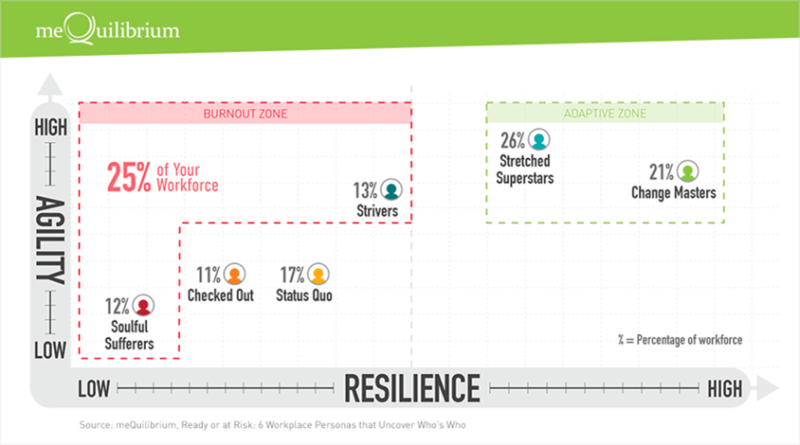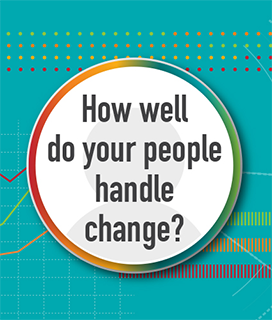You’ve heard before that in the midst of change and disruption thanks to technology, automation, and the global economy, you need to create an agile organization. You need agile systems and structures in place to adapt to the digital transformation.
But you haven’t heard the whole story.
Yes, it’s true you need an agile organization, but to have an agile organization, you need agile people, since they comprise and build the structure of your organization.
However, our latest research has shown that agility without resilience leads to burnout. Without the emotional intelligence and capacity to learn — without resilience skills that lead to fundamental change — you’re setting your workforce up for failure.
The Dynamic Duo of Response and Reskilling
It’s almost a cliche to say that work is being transformed. The Council on Foreign Relations, in their 2018 report called “The Work Ahead,” believes that millions and millions of workers are being displaced by automation. “As many as one-third of American workers,” they estimate, “may need to change occupations and acquire new skills by 2030 …”
Many organizations are scrambling to respond to the coming skills crisis, as reported in The Wall Street Journal: “Thousands of companies across the country are in the thick of a digital revolution that requires them to transform their operations. They need an employee base that’s ready to do new kinds of work, filling roles that are just emerging and adapting existing jobs to integrate more data and automation.”
Some workers are able to respond gracefully to this change and disruption, while others find it more challenging.
This is where agility and resilience play a critical role.
To better understand the relationship between resilience and agility — and the benefits of these combined adaptive capabilities for business outcomes — meQuilibrium behavioral and data scientists surveyed over 2,000 employees from a national panel.
The results gave us insight into how change is affecting your workforce and which segments of employees are better able to manage the disruption that comes from this change.
We analyzed the data in our research and performed a cluster analysis to understand the segments represented in your workforce. These clusters became personas with which we started to see a picture of how different segments responded to change and uncertainty.
Do you know how well your people respond to change?
To see how your organization will respond to disruptions in the marketplace, take a look at the individual people who make up your organization. Some of your employees are ready for any change at any time, while others need more time to reflect and process before they’re ready.
Consider these questions:
● Do you know who on your team is ready for change, who is agile and resilient in the face of ambiguity? Or are do they have a fixed mindset, coasting into the future on the status quo?
● Do you know who is willing and open to learning new skills, new ways of thinking and behaving? Or are some of your employees stuck in their ways?
● Do you know who is ready for a new leadership role, someone ready to tackle the challenges ahead and forge a new path?
● Do you know who may be suffering from anxiety and burnout, or who may be likely to suffer in the future because of their mindsets today?
Knowing who’s who will provide clarity and direction, so you can maximize your organization’s resources for a more agile future.

For example, through analyzing unique segments of the employees we surveyed, we discovered a startling insight: There’s one segment, or workplace persona, which we’ve named “the Striver,” that’s more at risk for burnout than any other. This type of individual is unable to sustainably keep up with the pace of change due to high levels of agility paired with low levels of resilience.
Do you work with a Striver? Could they be at risk for burnout?
Discover more insights to answer these questions with meQuilibrium. Download the 6 Workplace Personas infographic to better understand your workforce and learn how you can be more aware of the challenges your colleagues take on when faced with change.


